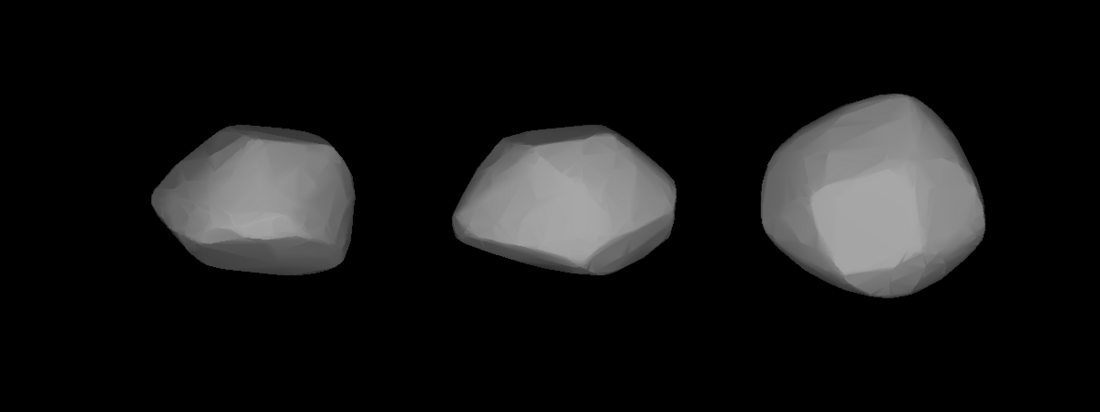Top Qs
Timeline
Chat
Perspective
36 Atalante
Main-belt asteroid From Wikipedia, the free encyclopedia
Remove ads
36 Atalante is a large, dark main-belt asteroid. It was discovered by the German-French astronomer H. Goldschmidt on October 5, 1855, and named by French mathematician Urbain Le Verrier after the Greek mythological heroine Atalanta (of which Atalante is the French and German form, pronounced nearly the same as 'Atalanta' in English).[7] It was rendered 'Atalanta' in English sources in the 19th century.[3] This asteroid is classified as C-type (carbonaceous), according to the Tholen classification system.[1]
Observation of the asteroid light curve indicates it is rotating with a period of 9.93 ± 0.01 hours. During this interval, the magnitude varies by an amplitude of 0.12 ± 0.02.[8] By combining the results of multiple light curves, the approximate ellipsoidal shape of the object can be estimated. It appears to be slightly elongated, being about 28.2% longer along one axis compared to the other two.[9] Atalante was observed by Arecibo radar in October 2010.[10][11]
This asteroid shares a mean-motion resonance with the planets Jupiter and Saturn. The computed Lyapunov time for this asteroid is only 4,000 years, indicating that it occupies a highly chaotic orbit that will change randomly over time because of gravitational perturbations of the planets. This is the shortest Lyapunov time of the first 100 named asteroids.[12]
Remove ads
Notes
- The /ætəˈlæntiː/ pronunciation is for the Greek form Ἀταλάντη; however, the name Atalante here is actually the German form of the Latin Atalanta, with the German final -e being a schwa much like an English final -a – and indeed, 'Atalanta' is given as the English form in Craig (1869).[3]
References
External links
Wikiwand - on
Seamless Wikipedia browsing. On steroids.
Remove ads

